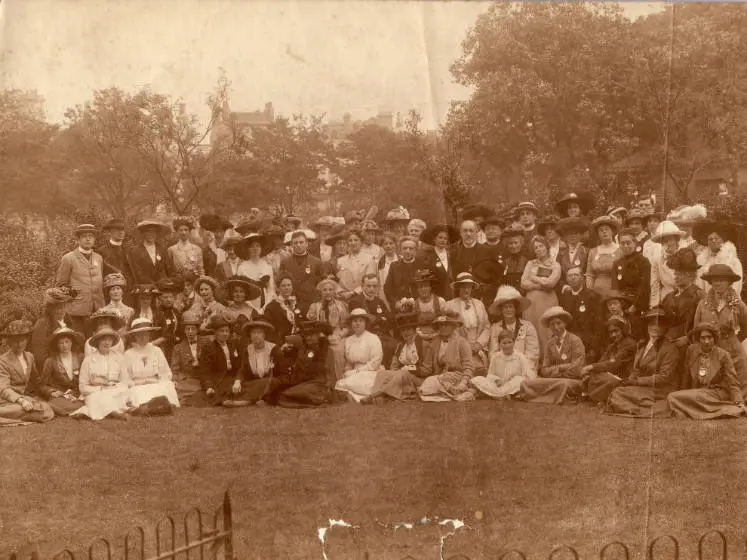Unearthed photograph highlights important role of Indian suffragettes

A rare photograph discovered in the Women’s Library archives at the London School of Economics and Political Science (LSE) has highlighted the significant, but often unrecognised, role undertaken by Indian women in the suffrage movement.
The photograph, taken by Muriel Darton, of a Church League for Women’s Suffrage meeting in Brighton on 2 July 1913, shows two Indian women in the group.
Further research revealed one of the women to be Doctor Susila Anita (Susie) Bonnerjee, who was Secretary of the Ealing Branch of the Church League for Women’s Suffrage. The other woman in the photograph is thought to either be her sister Nellie (Nalini) Blair or possibly a sister-in-law, Amiya (Kitty), who visited Susila in 1912 - 1913.
Discovered by Clare Wichbold, a research volunteer at Hereford Cathedral, the photograph is incredibly important as very few images of Indian women participating in the suffrage movement exist. The voices and images of Asian women are often missing from the suffrage story despite their significant contribution to its work.
Originally looking for images of prominent campaigner Florence Canning, Clare didn’t initially realise the significance of her find. Commenting on the photograph’s discovery she said: "I was so excited when I’d found Florence, a key figure in the Church League, that ironically it was my husband Dave who spotted the Indian women sitting at the right of the photograph. We then tried to find out who they might be using the British Newspaper Archives, which include the Church League newspaper from the time."
After discovering the image, Clare contacted historian Dr Sumita Mukherjee of Bristol University to help identify the women.
Commenting, Dr Sumita Mukherjee, who is a historian of the British Empire and the Indian Subcontinent, said: "This is a remarkable archival find as there is such little photographic evidence of the involvement of women of Indian ethnicity in the British suffrage movement. Britain was very racially and ethnically diverse in the 1910s but very few women of colour were encouraged to join the British suffrage movement. A few middle-class Indian women were involved and it is wonderful to see this photographic evidence of the ways in which the British suffrage movement was not solely a white movement."
Curator for Equality, Rights and Citizenship at the Women’s Library at LSE, Gillian Murphy, added: "This discovery just shows what we can still learn about the suffrage movement and that such ‘discoveries’ are made easier through digitising collections."
It is hoped that now some of the people in the photograph have been named, sharing the photograph more widely will enable more to be identified and this remarkable image will be given its rightful place in the suffrage story.